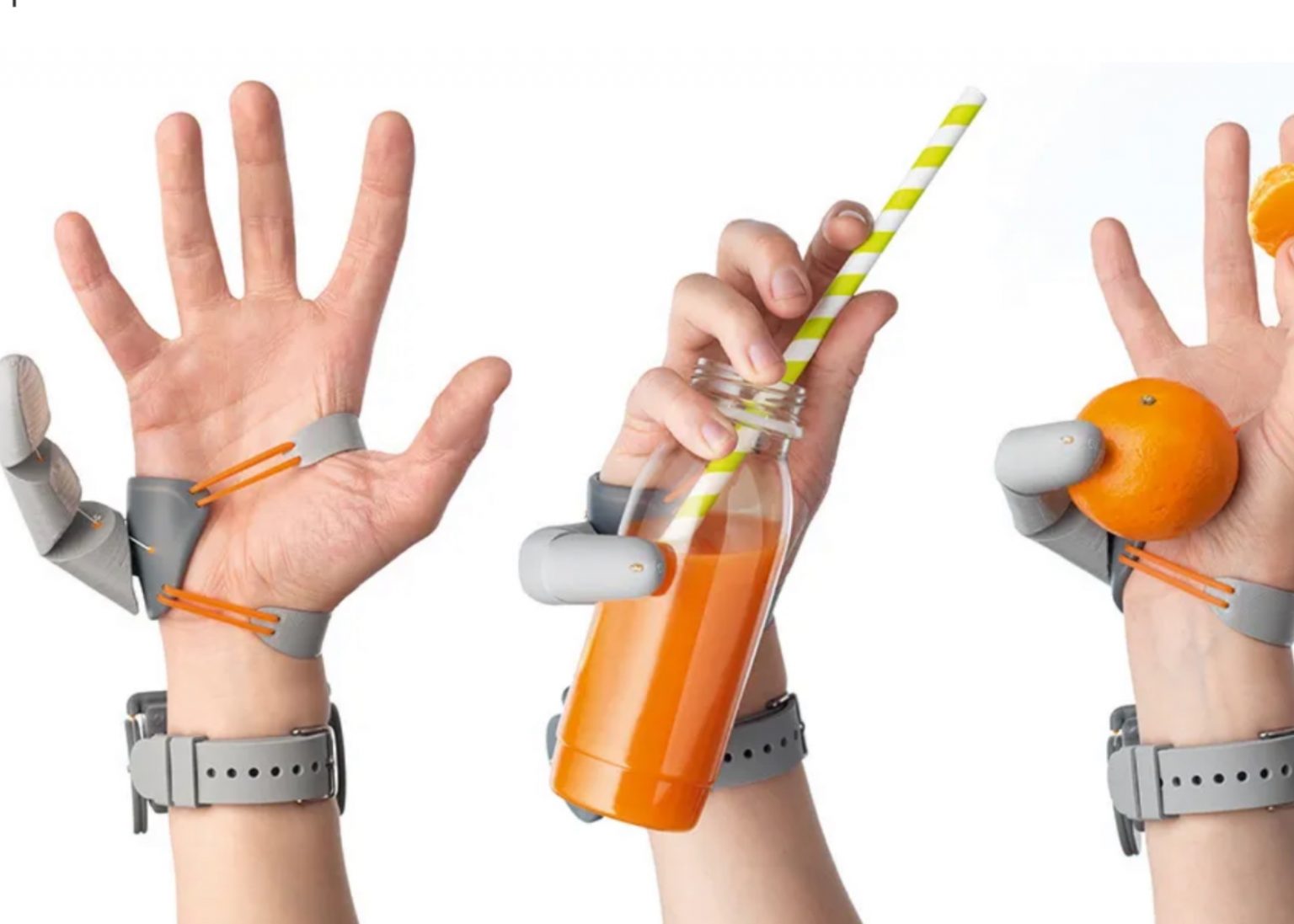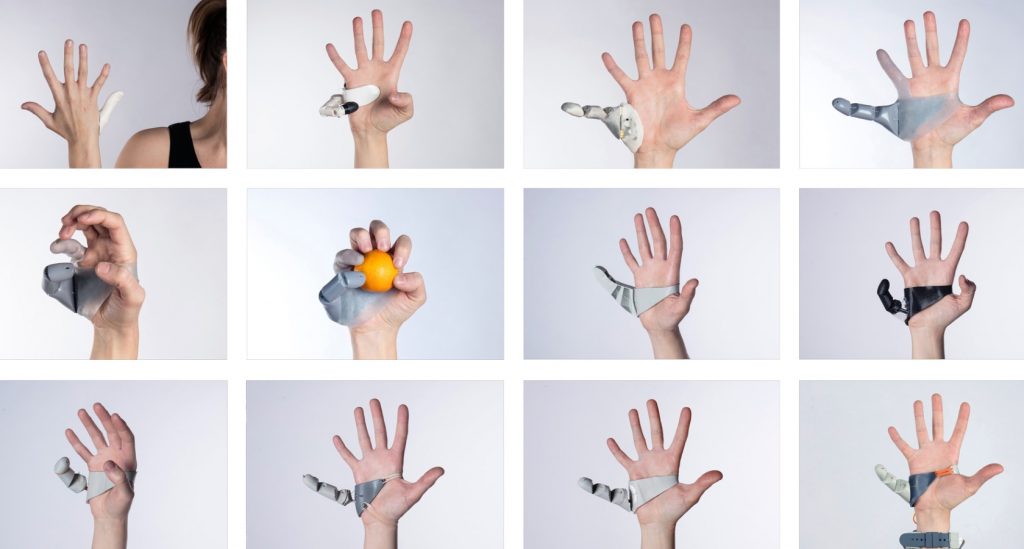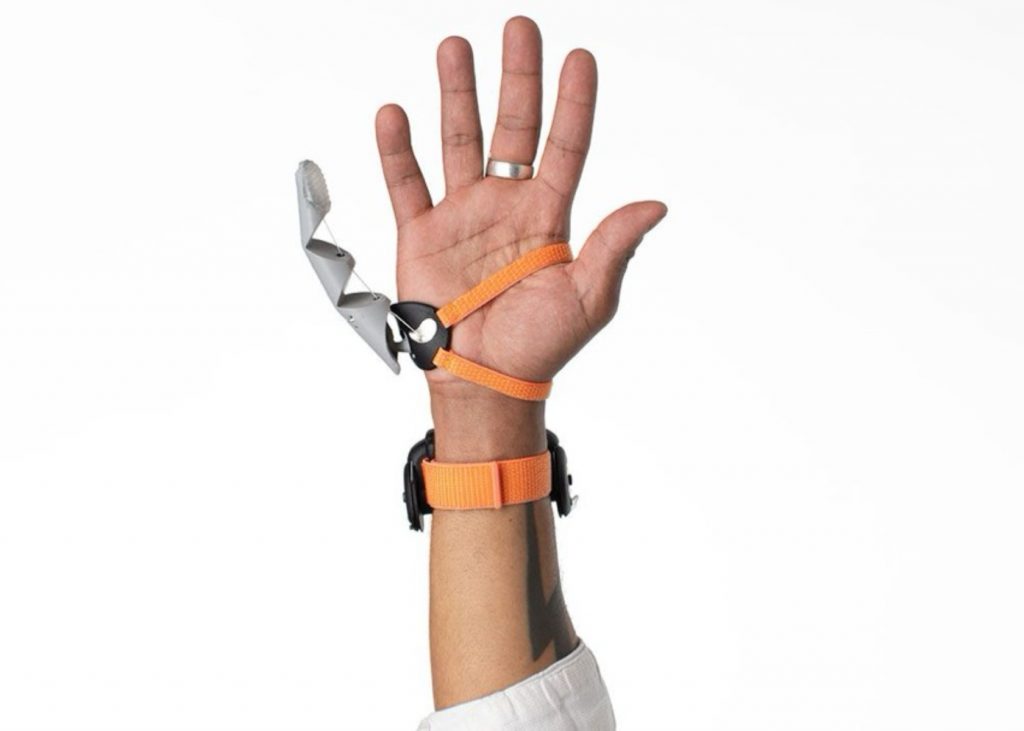Dani Clode, the creator of the third thumb, believes humans need to move forward from viewing prosthetics as replacements and instead view them as possible extensions of the human body.
If you’ve watched the hit series Twisted Metal and thought Stephanie Beatriz’s prosthetic metal finger was cool enough to lose a digit for, you may not have to. Dani Clode, the creator of the third thumb, believes humans need to move forward from viewing prosthetics as replacements and instead view them as possible extensions of the human body.
She also points out on her website that the origin of the word prosthesis means to add to or extend and not to fix or replace. She claims that the origin of this word inspired her project which is currently under development at the University College London in collaboration with The Plasticity Lab. The project named The Third Thumb, is as you probably already guessed, a 3D-printed third thumb.
How it works
Now if you’re wondering what you could do with a third thumb, apparently quite a lot. According to Dani Clode, the prosthetic third thumb has 2 basic types of movements, both of which allow you to do stuff with one hand that would otherwise need both your hands. The third thumb can not only move across your hand but also upward towards your pinky finger so that you can use it to hold something against your wrist while your thumb and fingers are still free for additional movement. One example that he gives is the act of holding a jar with the third thumb while your actual thumb and remaining fingers are free to either unscrew the lid or even dip a spoon or a straw in.
If you’re also wondering how you would control the actions of this third thumb, the answer is with your toes. That’s right, your toes control the third thumb as there is a pressure sensor beneath both of your big toes. So to move the prosthetic thumb across your hand and hold something against your wrist you would have to flex your right big toe downward and to move the third thumb up towards your pinky finger you would have to flex your left big toe downward. While it may sound complicated, the experiment or study that we are going to talk about next proves how adaptable the brain is to these augmentations and that after some practice the movements come pretty naturally.
The experiment
In a study published in a multidisciplinary research journal called Science Robotics, 20 “able-bodied” participants were selected at random from internet ads and were asked to use the third thumb over a period of 5 days to study how their brain would adapt. What’s interesting is that they specifically did not select musicians as apparently, musicians’ brains approach finger movement quite differently from non-musicians.
The 20 participants were then compared to a control group of about 10 participants who were given a “static” version of the third thumb to observe the changes the brain makes to adapt to this augmentation. After a 5-hour training session in the lab, the participants were encouraged to take the third thumb home and practice using it in their daily lives.
According to Paulina Kieliba of the UCL Institute of Cognitive Neuroscience, body augmentations like the third thumb could be incredibly beneficial in the future. Examples she gives include that of a surgeon not having to depend on an assistant to hold things for him or pass things to him during surgery. She also talks about how a person with only one hand could possibly use it to carry out actions that would normally require both hands.
All participants underwent an MRI and behavioral test prior to using the third thumb so that any changes in the way the brain maps out hand movements in the sensorimotor cortex. Participants were also made to use the third thumb while distracted and even blindfolded and the results were quite impressive, to say the least.
Perception and Reality
There is a catch however, and while most participants were pretty quick to master the third thumb, even to a point where it felt like an actual part of the body, follow-up MRIs on participants showed changes in the brain’s perception of the biological hand. A good example would be the “rubber hand illusion experiment,” or the prank where you hit a fake rubber hand with a hammer, and the person actually feels pain. This proves that our brain’s perception of body parts can easily be disrupted and according to the study these changes can last for days or even weeks.
So while a third thumb or an extra limb could be immensely useful, the question is whether you really want to mess around with the way your brain controls your actual biological limbs and digits.
In case you missed:
- This Prosthetic Hand can detach and crawl across the floor. How cool is that?
- This computer uses human brain cells and runs on Dopamine!
- Scientists establish two-way Lucid Dream communication!
- From Fridge to Fusion Reactor, How Mayonnaise is Facilitating Nuclear Fusion
- Lab-Grown Brain Thinks It’s a Butterfly: Proof We’re in a Simulation?
- Could Contact Lenses be the Key to Fully Wearable BCIs?
- Scientists gave a mushroom robotic legs and the results may frighten you
- Could the Future of Communication Be Holographic?
- Schrödinger’s Cat Just Made Quantum Computers 160x More Reliable!
- Will Pi Coin Be the Next Bitcoin? A quick Reality Check!












